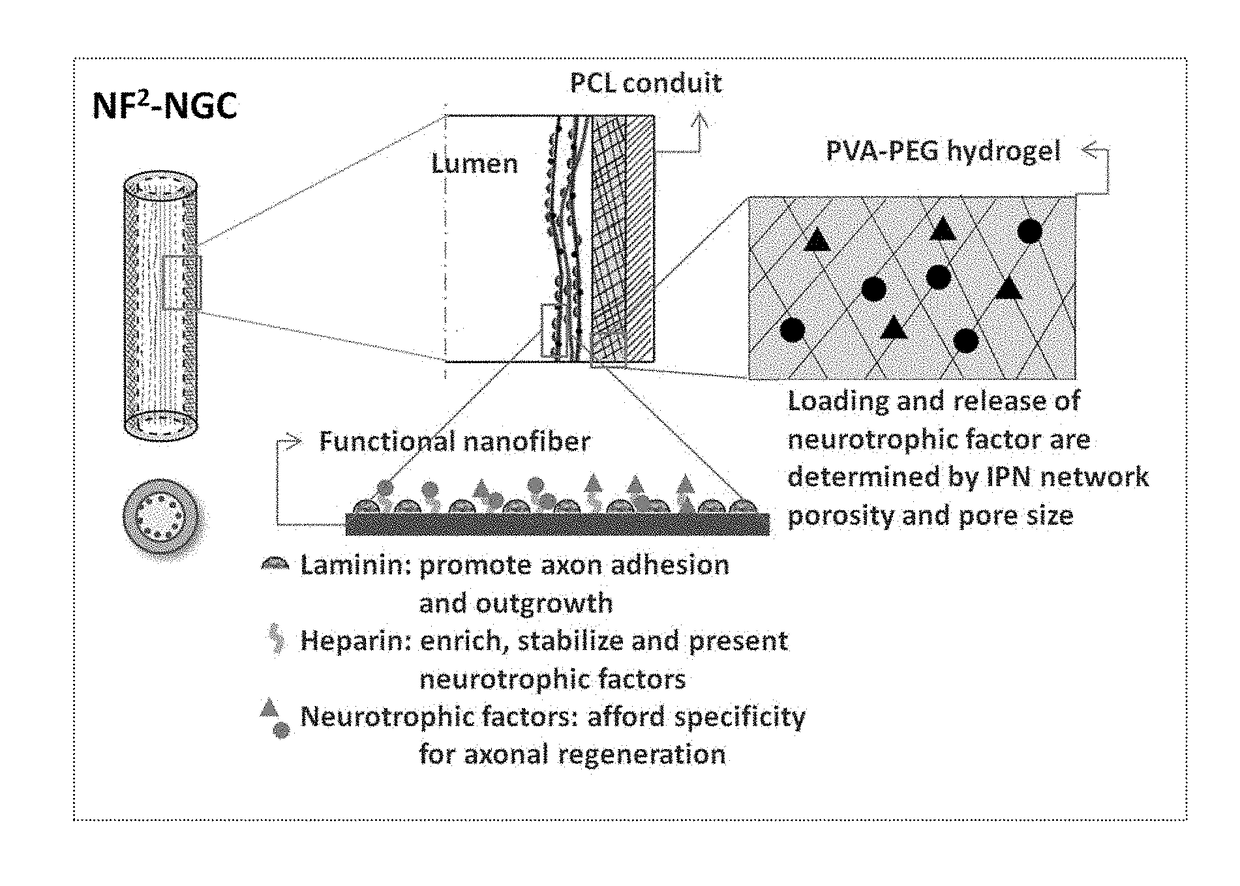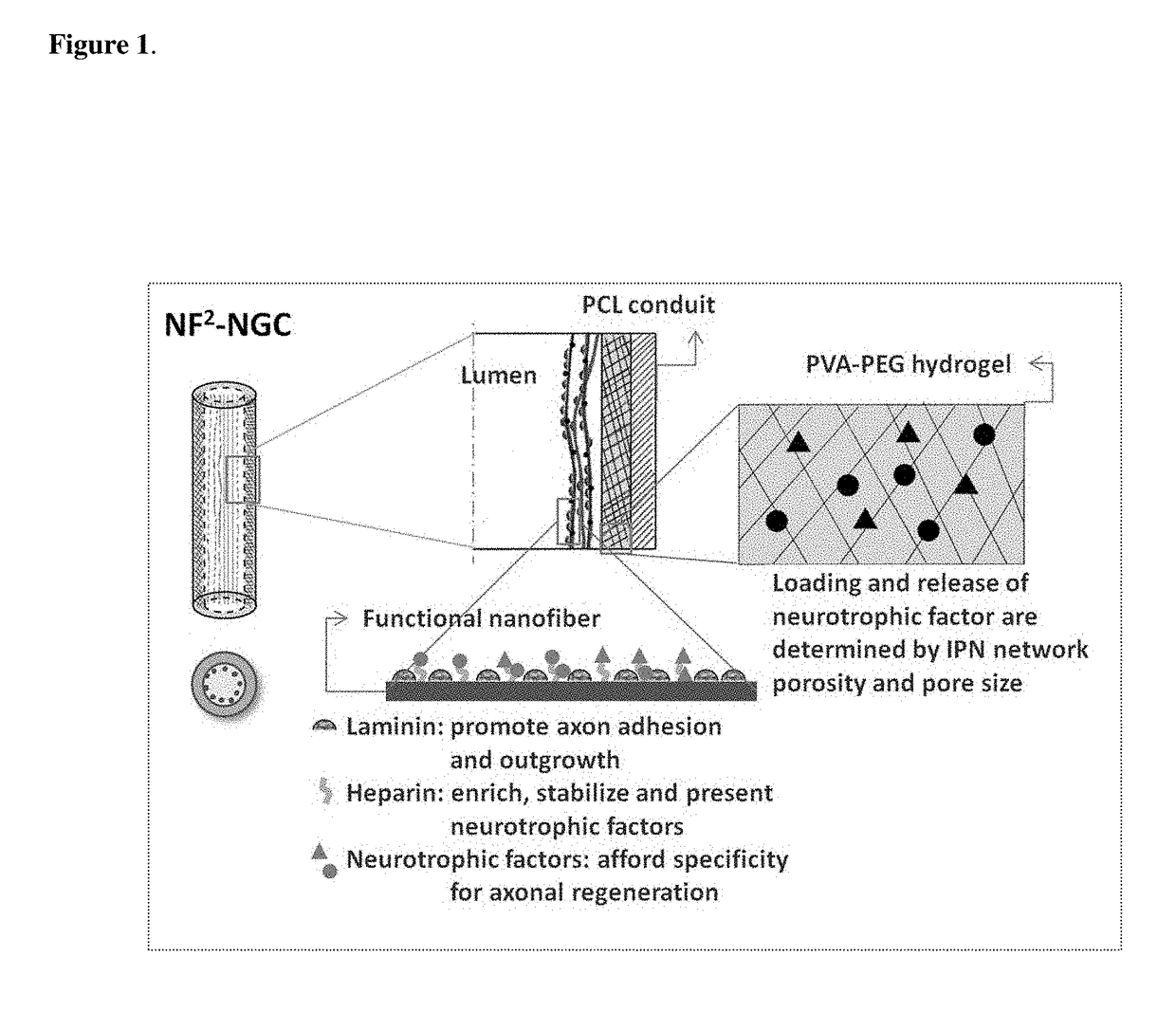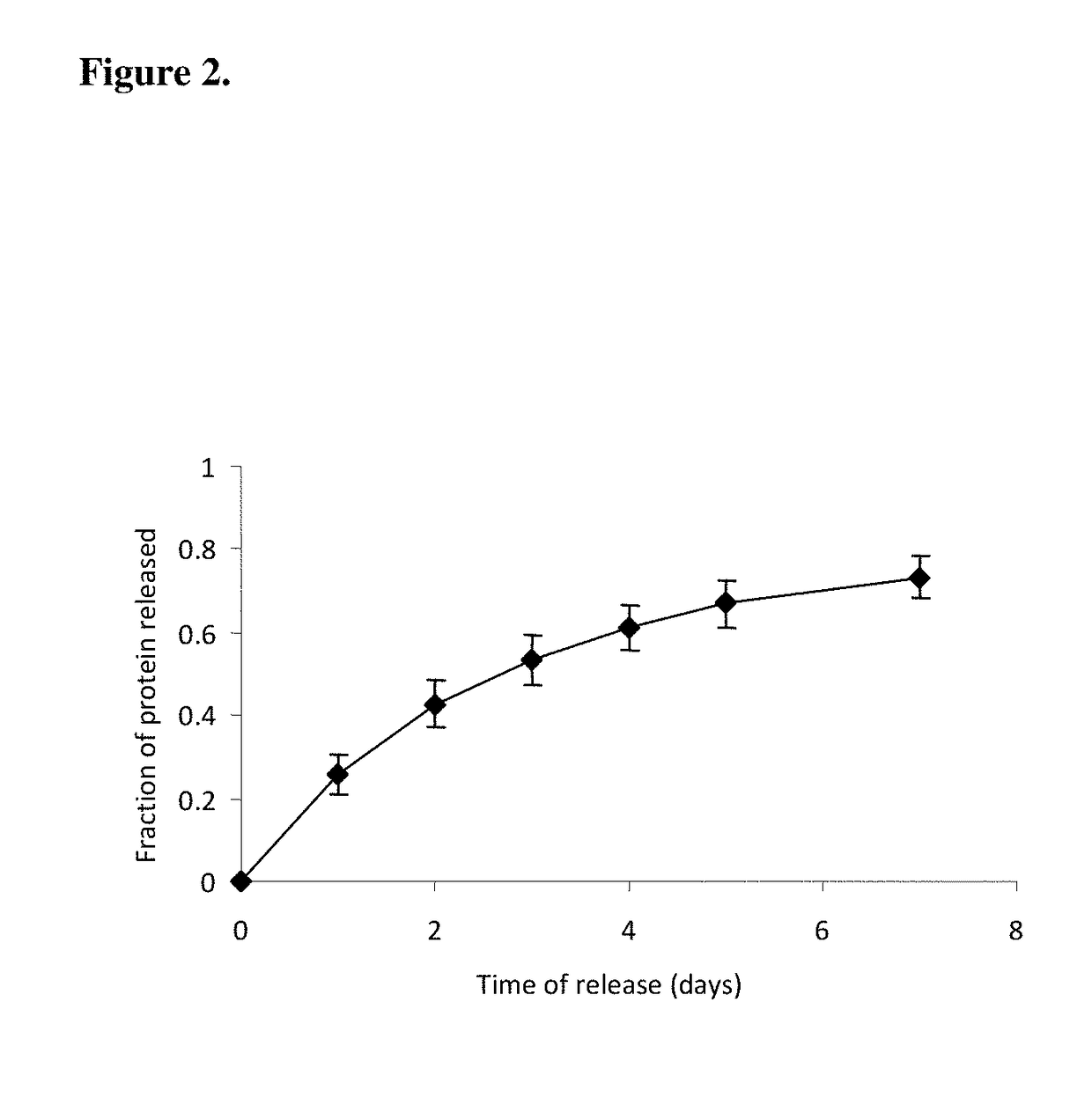Biodegradable nerve guides
a nerve guide and biodegradable technology, applied in the field of biodegradable nerve guides, can solve the problems of device failure, inflammation, growth factor inactivation, leakage of growth factors from the nerve guide, etc., and achieve the effect of reducing the burst release of protein and prolonging the releas
- Summary
- Abstract
- Description
- Claims
- Application Information
AI Technical Summary
Benefits of technology
Problems solved by technology
Method used
Image
Examples
example 1
Preparation of a Nerve Guide
[0080]1) Cast a 10 cm2 film of 50:50 PCI / PCLEEP on top of a glass slide mold from a 12% wt solution in dichloromethane.[0081]2) Dry the film under vacuum over night to remove residual solvent.[0082]3) Place slide on a hot plate and heat the film to 100° C.[0083]4) Add 1 ml of 1% PVA in water on top of the film.[0084]5) Quench the film at −20° C. for 30 minutes.[0085]6) Add 500 μL of 5% PVA containing 5 μg GDNF on top of the film.[0086]7) Freeze the composite at −20° C. for 12 hours.[0087]8) Cool at 25° C. for 30 minutes.[0088]9) Freeze the composite at −20° C. for 2 hours.[0089]10) Cool at 25° C. for 30 minutes.[0090]11) Repeat steps 9 and 10 for a total of 12 cycles.[0091]12) Freeze-dry the construct.[0092]13) Place electrospun PCL nanofibers modified with laminin on top of the hydrogel layer.[0093]14) Roll the construct into a tube with inner diameter of 3 mm and the hydrogel layer on the luminal side.[0094]15) Seal the membrane with a trace quantity of...
example 2
Release Profile of Model Proteins from the Nerve Guide Construct
[0096]A nerve guide is prepared as described in Example 1 with bovine serum albumin (BSA) as a model protein factor loaded in a 5% PVA-83k-99 hydrogel construct into buffered saline at 37° C., gel was frozen at −2° C. for 72 hours, followed by 4 conventional freeze-thaw cycles. The release profile of BSA is shown in FIG. 2.
example 3
Process of Preparing a Double-Layered Hydrogel Nerve Guide
[0097]1) Repeat steps 1-8 as described in Example 1 with Gel A loaded onto the PCL membrane.[0098]2) Independently prepare a 0.5 mm thick PVA hydrogel (Gel B) by replicating steps 6-11 as described in Example 1, with the sole modification of omitting the growth factor loading.[0099]3) Add 50 μL of 5% PVA solution on top of Gel A, then lay Gel 13 on top of the solution.[0100]4) Repeat steps 9 and 10 as described in Example 1 for a total of 4 cycles.[0101]5) Continue with steps 12-16 as described in Example 1.
[0102]Other modifications can be used to modify the rate of release of proteins from the hydrogel. The addition of a protein-free top layer provides an additional diffusion barrier to incorporate time-delayed protein release. Blending PVA with other water-soluble small molecular weight polymers changes the hydrogel crystallinity. Changing the number of freeze-thaw cycles, or simply incubation for prolonged periods at sub-z...
PUM
 Login to View More
Login to View More Abstract
Description
Claims
Application Information
 Login to View More
Login to View More - R&D
- Intellectual Property
- Life Sciences
- Materials
- Tech Scout
- Unparalleled Data Quality
- Higher Quality Content
- 60% Fewer Hallucinations
Browse by: Latest US Patents, China's latest patents, Technical Efficacy Thesaurus, Application Domain, Technology Topic, Popular Technical Reports.
© 2025 PatSnap. All rights reserved.Legal|Privacy policy|Modern Slavery Act Transparency Statement|Sitemap|About US| Contact US: help@patsnap.com



